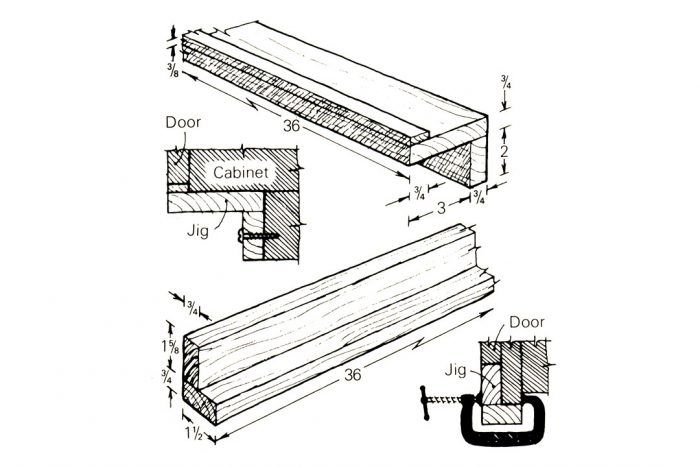
Hanging cabinet doors is easy for most three-handed craftsmen: One hand keeps the door plumb and flush to the cabinet frame, one keeps the bottom of the door at the right height above the bottom rail (so that there is no binding), and one screws the hinges in. For those of us with two hands, the jigs I use help; both work well for lipped or overlay doors.
I rarely hang cabinet doors before the units are installed on the site, although I do fasten the hinges to the door. It’s common practice to prehang doors in the shop, remove them for transit, and then rescrew the hinges. I see little gain in pre-hanging, for there are always adjustments to be made after the stress of moving racks the frames slightly. I prefer to do the job once.
The first jig shown supports the doors on the base cabinet. The dimensions given suit my purposes, but can be changed to suit your own needs. Using the jig is simple. Slide it into the kickspace and push it tight against the underside of the cabinet edge. To hold the jig in place, screw its back edge to the plinth (the screw holes will be covered by a kick strip) or wedge the jig tight with scraps built up from the floor. With the bottoms of your doors resting on this level jig, you need worry only about the doors’ left-right positioning; all their heights will be the same.
The jig for the upper cabinets can be held in place with C-clamps. The jig’s vertical dimension is suited to the 2-in. thickness that I favor for the bottom rails of upper cabinets.
—J. E. Gier, Mesa, AZ
Edited and illustrated by Charles Miller
From Fine Homebuilding #1





























